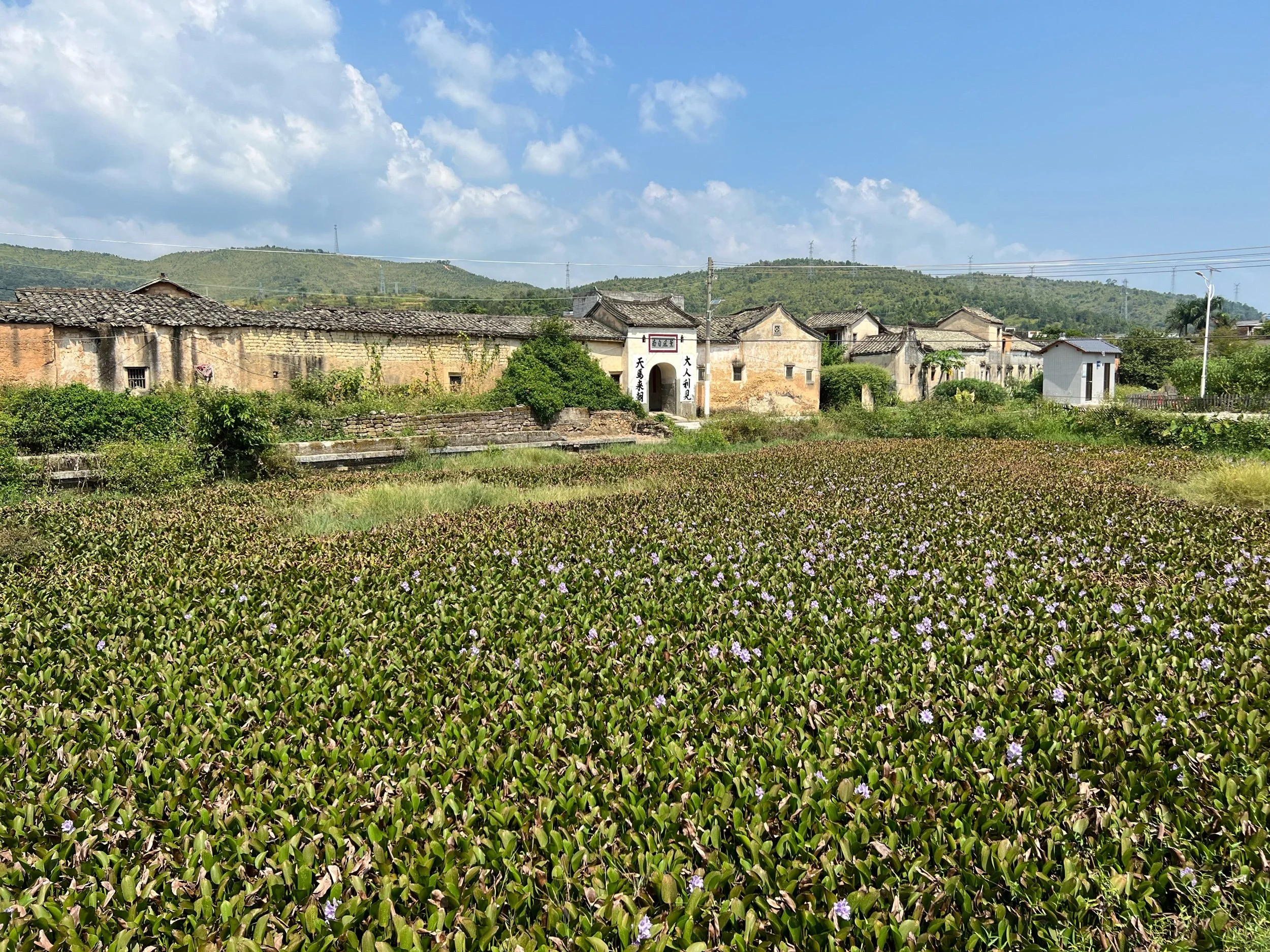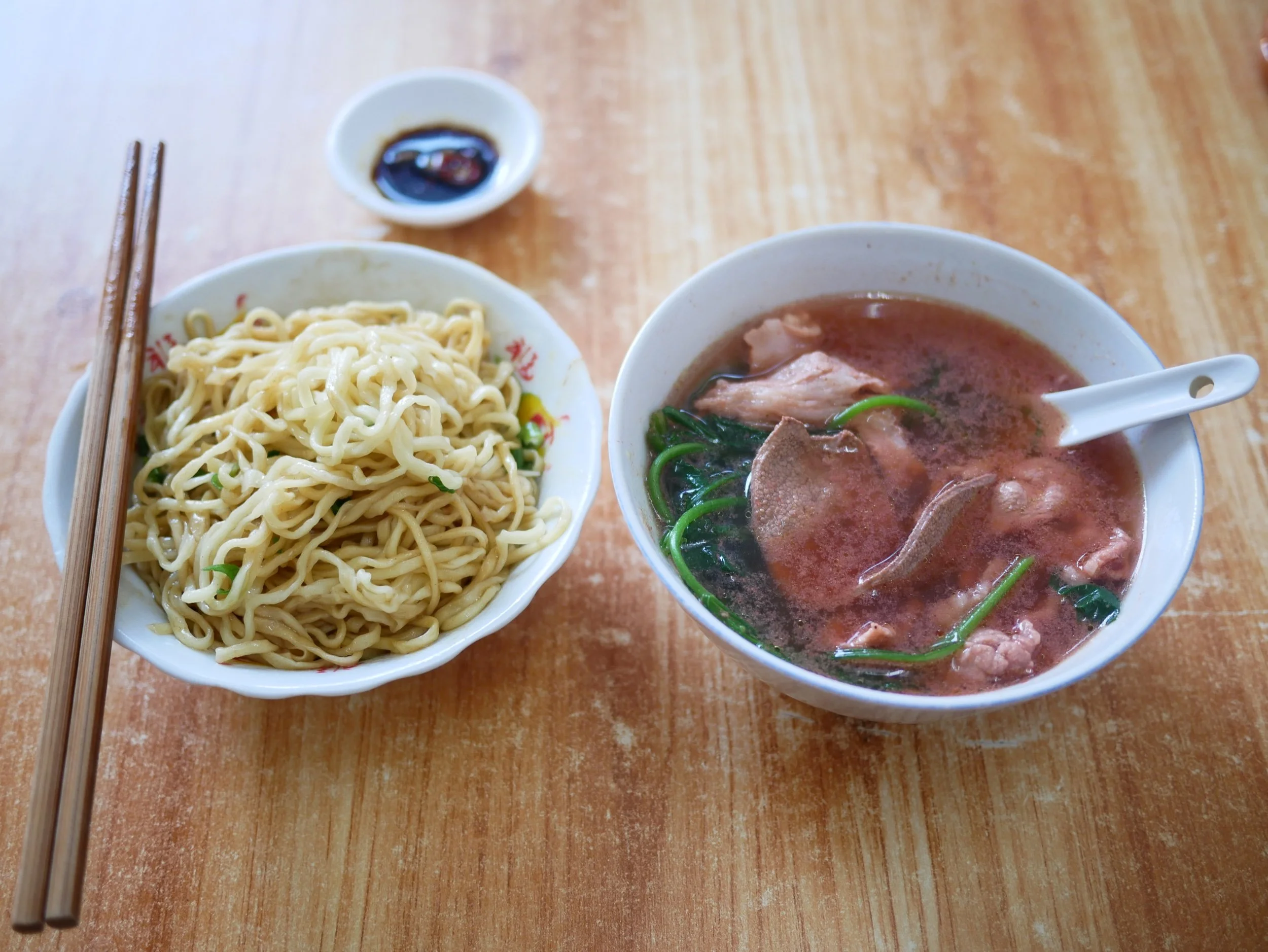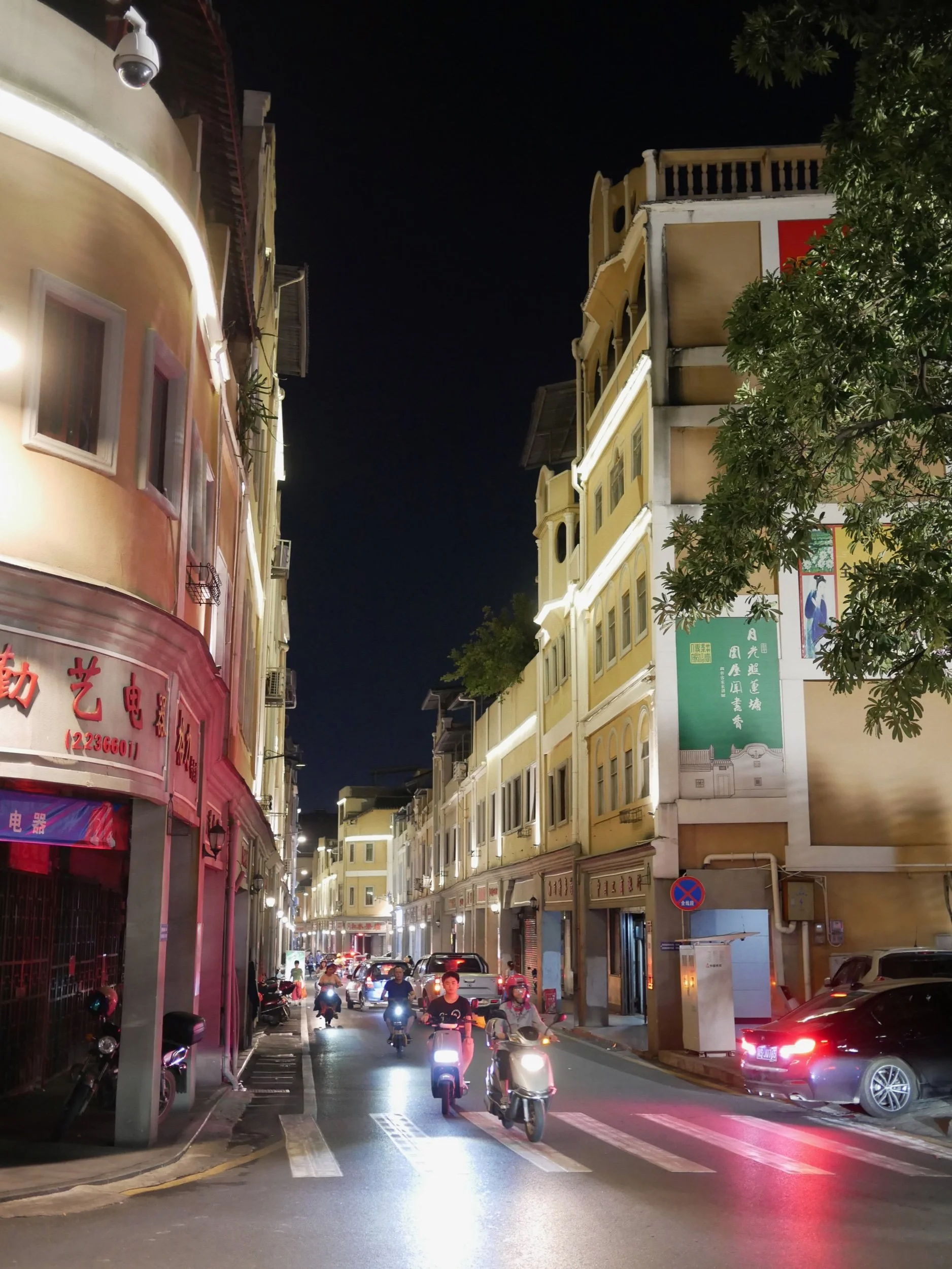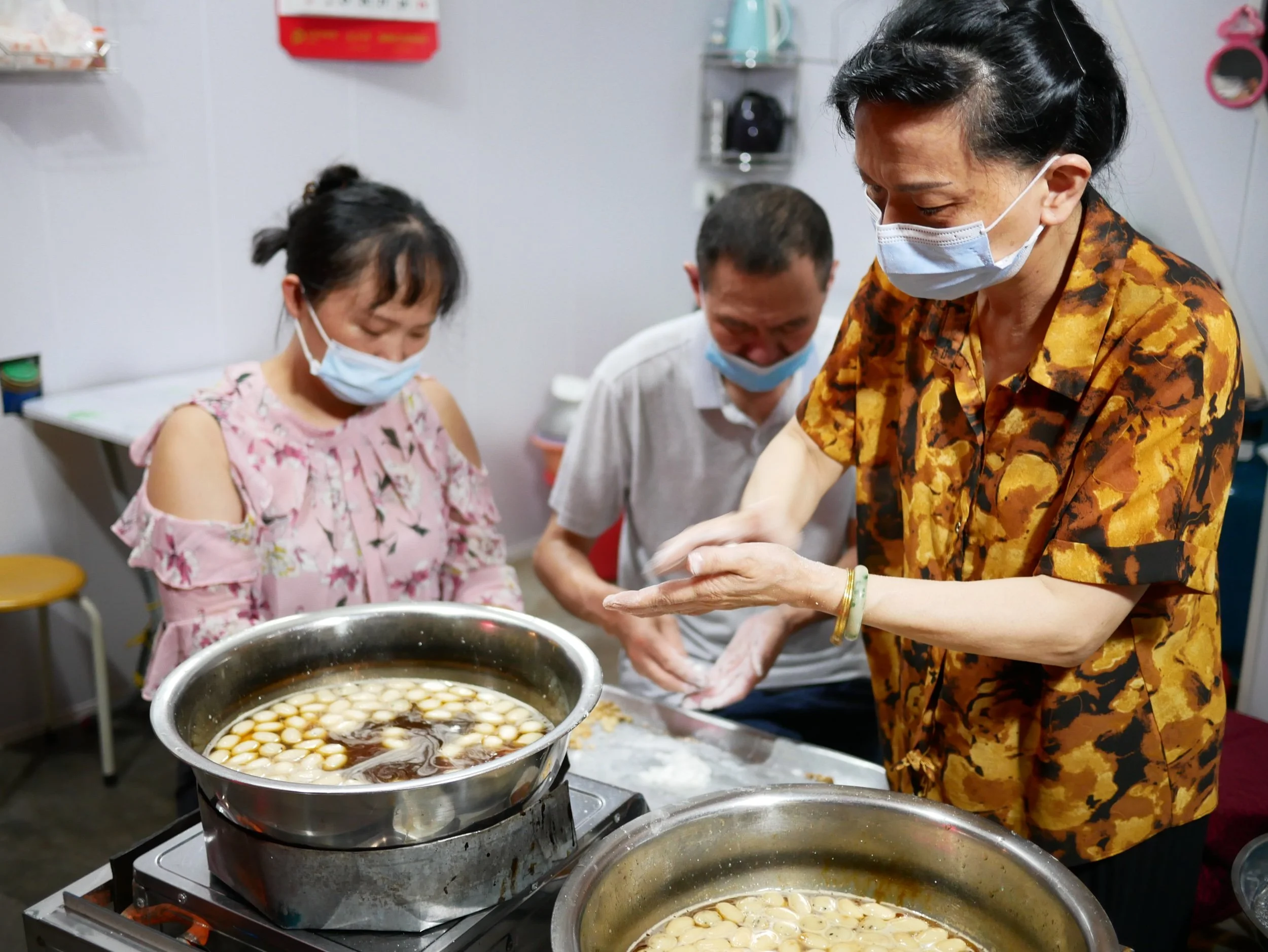Ancestral Village: Jianqiao, Guangdong
My main reason for visiting Meizhou was because my mom’s father was from Meizhou. In the course of researching where exactly my grandfather’s home was, my mom shared with me some scans of pages from the family’s ancestral family book, and found some place names and addresses on the cover.
For a while, we thought the family home might be in a village called Jianqiao 建桥镇. That’s because this name featured prominently on the cover of the family book, and when I looked up the village on the internet, I found that a river ran alongside it. In family lore, there was a story about my grandfather playing along a riverside - could that river be it? It wasn’t until basically the day I arrived in Meizhou, and the day I visited the house, that we confirmed that the ancestral home was indeed in the city that is called Meizhou today.
Jianqiao village was where the ancestors’ ancestors came from. Confusingly, it’s technically also in Meizhou city (梅州市建桥镇), but it’s really far away from the city city.
Conveniently, this village was smack in between Meizhou city and Chaozhou, my next stop in the journey. To make this trip, I hired a car on Ctrip/携程 There seemed to be only one supplier on Ctrip (the other choice I saw turned out to be based in Guangzhou). So there really wasn’t any room to negotiate - this trip would cost 1000 rmb. But it turned out to be an great investment.
I was picked up at 9:30am at my hotel; the driver Mr. He called me the day before to confirm. He turned out to be a cool guy - with a love of rubber duckies apparently. The car was an AION, which I’ve come to like, after being driven around in one in Jingdezhen.
About an hour later, we arrived at Jianqiao. Here, he got out of the car with me, saying that he’d come into the village with me. I was a bit confused about this, but he explained, “Otherwise they won’t know what you’re doing poking around.”
His instinct turned out to be spot on. The village has four gates corresponding to the four cardinal directions; we entered through the south gate which you see above, and into one of the first houses we passed, the driver said “nihao 你好!” into the doorway.
A guy appeared, and they talked in Hakka dialect (pretty much unintelligible to me) about what we were doing poking around, and the driver explained how I had researched my family and came here. The resident said something about the family book (jiapu 家谱) and I said yes, I looked at it! And showed a picture of the cover on my phone. He offered to take us around.
First he took us around the corner to the other entrance of his house, with this 200 year old tree growing through a hole in the roof!
Most of the houses in the village were unoccupied, but later I learned that a lot of people (thirty some thousand?) come back during certain festivities. One of the houses was pointed out as where the first family that went overseas and earned money came from. I can’t remember if it was this house...
…or this one.
It was a very charming village.
This was the south gate.
After the visit I crossed the river and took a picture of the south gate from the other bank.
There are I believe four ancestral halls; this one Bao Da Tang 保大堂 is the one my maternal grandfather’s family belonged to.
These stele out from represent those who have passed civil servant exam. The Bao Da Tang stele, and the hall itself, were preserved or renovated, so the driver commented that this branch of the family must be well funded.
As the first villager was showing us the ancestral halls, the other two villagers came by, and one of them invited us into his home to have tea! We chit chatted for a while; the host had especially strong opinions about politics. I understood very little of it, because they were all speaking in Hakka, and the driver only translated a part of what they said.
I gave them a tin of imported Danish cookies I had bought in Meizhou, which I brought along just in case. That’s because the cookies I brought along from Shanghai “just in case” I met relatives I already gave out in Meizhou!
The older, more talkative villager showed us around the rest of the village. He is in the family’s 21st generation; I would be in the 22nd generation. In this village, they are already on to generation 26! Things just move faster in these parts!
Here is the east gate.
Some flowers.
I really liked the painted trim along the edge of the roof; reminded me of an embroidered edge.
I liked the layered detail of the roof…
… and the obtuse angle of this building…
…and growing vegetables in a little plot outside of the village walls.
Another view.
Here’s the west gate. It looks like almost the whole village can be encircled with a moat.
Here’s the view of Jianqiao village from the other bank.
After the village visit, we went off for lunch. The place I had found on Dazhong Dianping app was actually completely full! This was kind of a surprise, because I had no idea about the quality of what I was finding on the app, but I guess it was the restaurant in the area.
We drove along a little more, and saw this restaurant which kind of gave me a good vibe.
It doesn’t show up in Dazhong Dianping, or even in the map! (And you can see in the bottom left corner that the temperature was in the 90s that day).
There was a big kitchen on the right, just as you entered.
They did have an extensive menu, but basically they said they would “arrange” (安排) the food for two people. First came this soup, that was seriously bubbling in its little pot.
Full of twigs! The broth is the main point of the soup.
Here was Hakka stuffed tofu, and stuffed bitter melon, just like I saw earlier in the day at the market!
I asked for meicai pork belly (梅菜扣肉), because I hadn’t had it yet on this trip. The previous version I had didn’t have the meicai at the bottom, but rather mushrooms. I thought this was really tasty! The driver commented how the meat was fatty but not greasy. Although he did say that this version wasn’t very authentic. The authentic version comes out like a dome shape, because the meat is layered at the bottom of a bowl, then the vegetables put in the meat, and then the whole thing flipped over.
They asked if we wanted vegetables, and I said yes.
This whole meal was only 70 rmb for all of this food!
Leaving satisfied, we continued on to Chaozhou.




